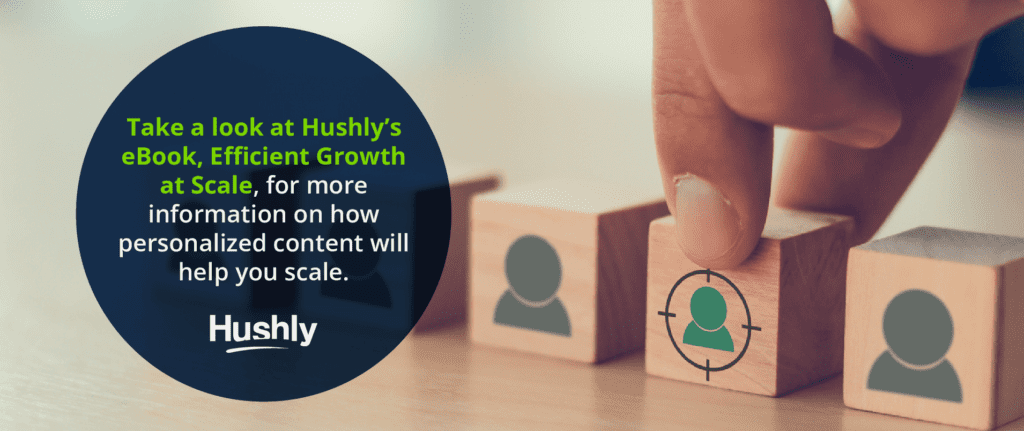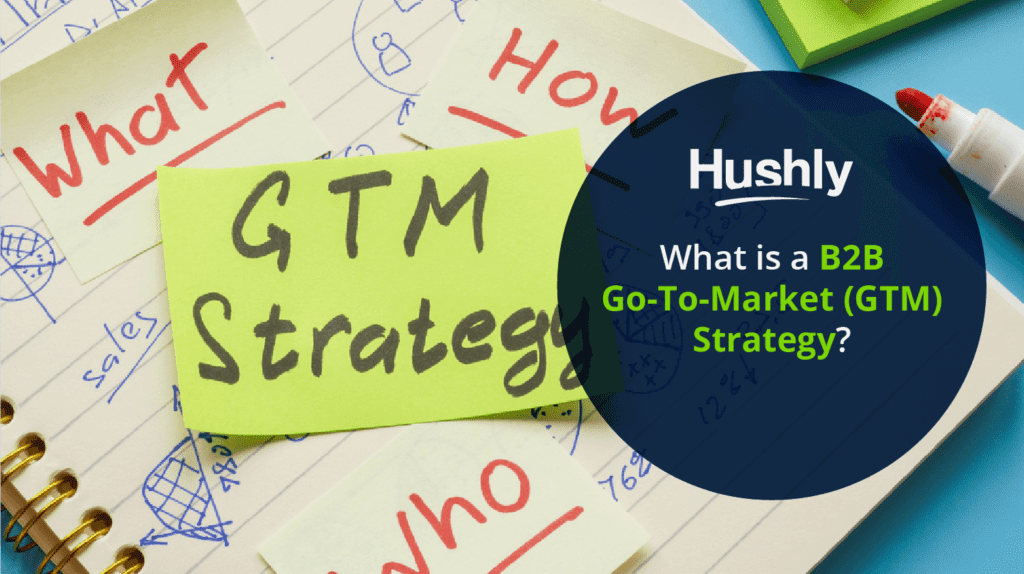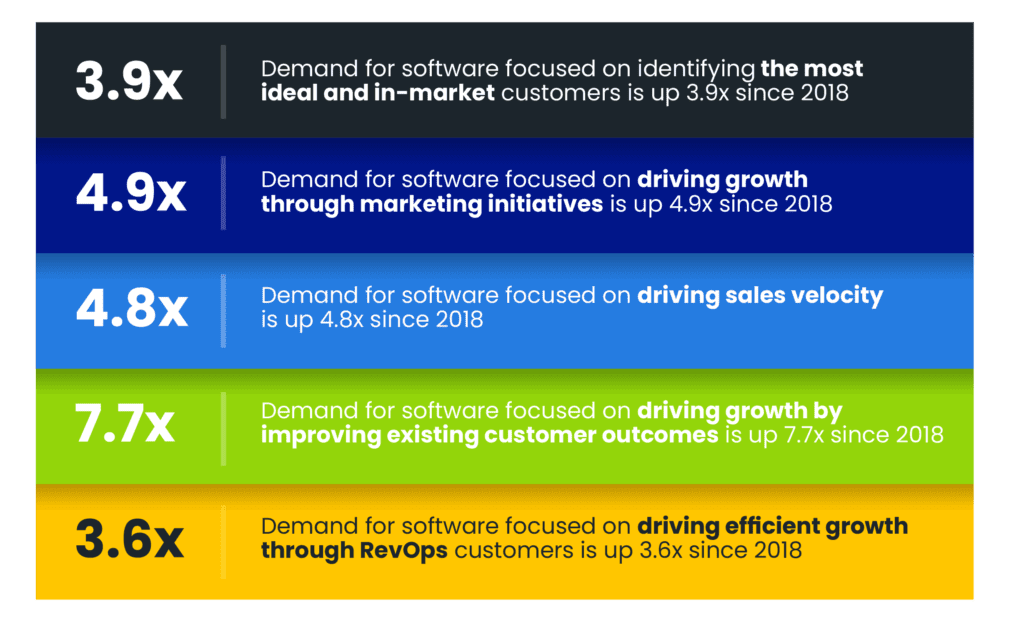Filters
Content Type
Topic
How to Create Personalized Landing Pages in 6 Steps
Someone who trusts you will come to you with many problems. In the world of business, problems mean opportunities to build solutions.
What if you had a permanent funnel of problems to cook up solutions to, each of them coming from a few customers who are so engaged with your content and products that they come to you first before even looking for other companies?
You’d be sitting on a goldmine.
This is the goal of personalized marketing content. In particular, today’s blog will be about personalized landing pages and how to effectively use them to generate trust and establish long-term business relationships that will help both parties scale.
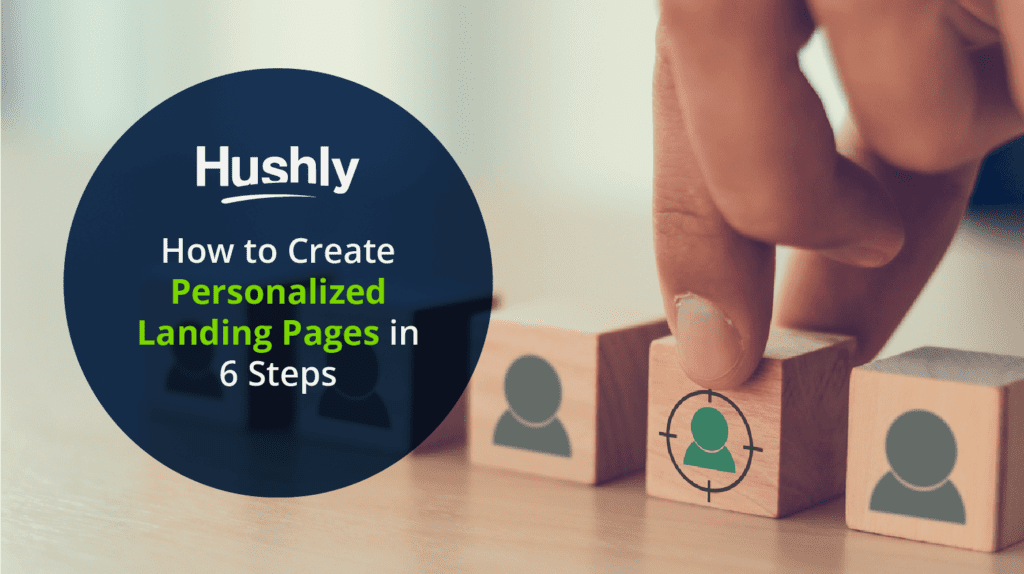
What Do Personalized Landing Pages Look Like?
Google considers the first page a client lands on to be a landing page.
This is not always a homepage. In fact, it rarely is.
Instead, a landing page looks more like this:
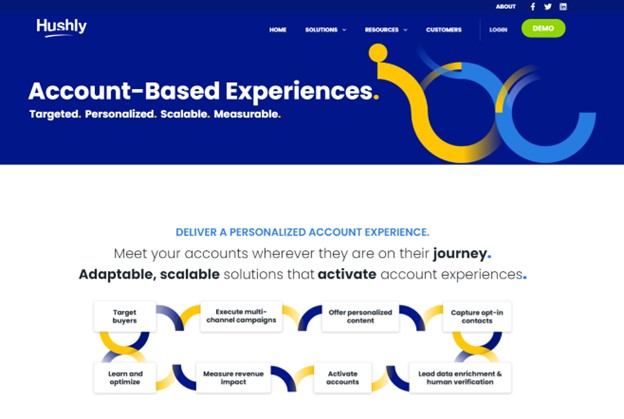
This is where the Google link landed me after searching for “personalized landing pages Hushly.”
Notice that this page doesn’t focus on anything except the solution I was searching for. This is because it’s based on the search result.
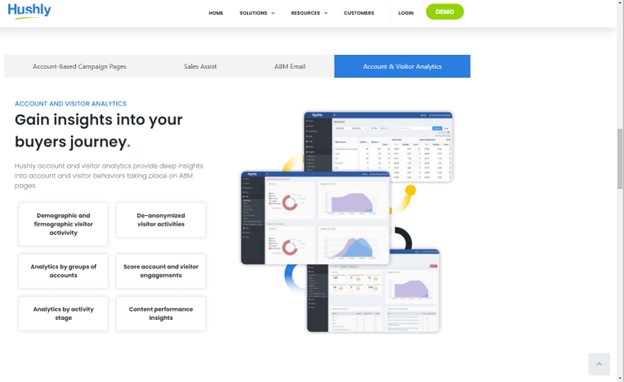
As I scroll, even more information becomes available, but all of it is still only related to my original search term (plus some other features that are related to it).
An even more personalized approach is possible and desirable when dealing with large customers like B2B buyers.
Why Use Personalized Landing Pages?
Here are a few reasons you should consider personalized landing pages.
B2B Customers Are Inundated with Ads and Generic Content
Marketing expert Ron Marshall penned this blog in 2015 where he attempted to count all of the ads he encountered in a single day to test the idea that each individual is exposed to up to 10,000 ads per day.
The experiment lasted less than an hour.
Before breakfast, Marshall had counted nearly 500 ads. Going outdoors would only increase the number of ads he was seeing. He called it quits there and decided the 10,000 figure was probably correct.
Buyers Have Limited Attention and Must Be Selective
The real world is a cacophony of information.
This doesn’t just include advertising. Our human brains are only capable of processing so much information at one time, so we are naturally evolved to make choices as to what information is worth paying attention to.
Personalized content is about recognizing this simple reality and trying to break through someone’s selective attention defenses to prove that you’re not just peddling more noise, but a legitimate solution to problems they’re facing.
6 Steps to Creating Personalized Landing Pages
Identifying your targets, challenging though it may seem, is the easy part. Now you’ve got to create the content. You’ll need unique content for each landing page you plan to personalize.
Here are six steps for creating that content.
1. Know Your Customer and Their Level of Engagement
You need to know the ins and outs of your B2B buyer’s company, responsibilities, needs, wants, and prior experience with your company.
Where the buyer is on the journey, and how they’re feeling about it, is the key to crafting great personalized landing pages.
How engaged are they with your sales process? Are they a return customer or a new prospect? How far along in their research have they gotten before you were involved?
Some of these can be answered with data, but some of them will require more involved research.
Don’t be afraid to reach out to potential customers to find this information out directly. It can help them and other customers who might fit a similar niche.
2. Leverage Search Results
How a customer searches for your content is crucial to how they’ll engage with it.
A customer who searched for a competitor of yours needs to know why your alternative is better, whereas someone who searches for you directly doesn’t need to hear about how you’re better than a competitor – who knows if they’ve ever heard of them?
You should also consider your keyword strategy and if it’s coherent across all landing pages. Your messaging is important, so similar keywords should appear in all forms of content.
3. Cater Landing Pages to Personas
Your buyer persona is your best customer. They check every box, are interested in your product, and are looking to scale alongside you. Always keep them in mind when crafting your landing page.
Though the persona is technically fictional, their specificity is bound to elicit a strong emotional reaction to real customers who feel you’ve really understood their pain points and offered a solution that makes sense to them.
In this way, your use of the character of your persona will be like how a writer uses a narrative to generate emotional investment. If a buyer sees themselves in the persona you’ve created, you can easily show them how your solution makes their lives easier.
4. Localize
Geographics can be as important as demographics. Learn your audience and prove that to them by taking an interest in their locale.
A buyer who believes you understand them, their goals, and even their daily lives may likely listen when you pitch your solution.
An easy example of this has to do with language.
If a customer is connecting to your website from French Canada, an option to navigate to your French website should be prominent on their personalized landing page. You could also include things like pictures of their location to further drive home that you’re knowledgeable about them and their circumstances.
5. Prioritize the Customer’s Needs
The ideal customer relationship is one that is mutually beneficial.
You want your product to help their company grow, and their success will contribute to your own. In this way, you are forming a partnership for the future.
Like any good relationship, the one between you and your B2B buyer must be based on trust.
How do you earn trust before someone knows anything about you? By showing them your good faith: prove the value you can offer them for nothing in return. This is the principle behind all ungated content marketing, so personalized content should only drive this home further.
6. Let Hushly Do It for You
No matter how skilled you are at crafting marketing content, the ordeal of sifting through reams of data combined with the creative pressure of personalizing your message to dozens of clients can weigh on you. The problem only grows larger as you scale.
If you’re interested in dropping that stress from your life, consider an automated content platform like Hushly.
Hushly uses a data-driven approach to personalized landing pages. We supply all the tools you need to create adaptable, scalable, personalized landing pages for every client you serve.
Earn Their Trust, Earn Their Business
If you’re confident in your product and your service, you should be extremely motivated to share it with those you believe it can help.
After all, if I’m capable of helping you, but you can’t find me when you need me, what use am I to you?
You want to be there for those who trust you. Your company should walk a similar line with the B2B clients that are most important to its business model.
When crafting any personalized content, whether it be landing pages or email campaigns, remember that your main goal is to earn the trust and camaraderie of the person you’re dealing with. Manage these relationships like you would your personal life.
Personalized marketing content should be friendly and familiar, like someone who is genuinely interested in your problems and wants to see you succeed.
If you can manage to convince buyers that you’re engaged in their problems at this level, you’ll have a far easier time selling them your solution.
Take a look at Hushly’s eBook, Efficient Growth at Scale, for more information on how personalized content will help you scale.
The post How to Create Personalized Landing Pages in 6 Steps appeared first on Hushly.

